6th Airborne Division:
How effective was its contribution to the success of the D-Day landings in Normandy 1944?
Malcolm A. Clough
D-Day Tours of Normandy
A dissertation, posted in seven parts (plus appendices)
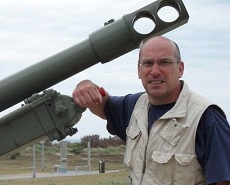
Part 1: Introduction
Part 2: The Development of British Airborne Forces
Part 3: The Arms and Equipment of British Airborne Forces
Part 4: The Importance of Fire Support provided to 6th Airborne
Part 5: Planning and preparation for D-Day
Part 6: The Actions and Outcomes of 6th Airborne’s Operations
Part 7: Conclusions
.
Part 6: The Actions and Outcomes of 6th Airborne’s Operations
6th Airborne Division:
How effective was its contribution to the success of the D-Day landings in Normandy 1944?
Malcolm A. Clough
Although carefully prepared, 6th Airborne’s proposed operations like any other military plan needed to be adapted as unforeseen circumstances dictated the nature of events. It is a tribute to the quality of leadership amongst the senior officers that they were not daunted by such a prospect. Gale himself stressed the need for flexibility. ‘You must remember that it is your plan, and it must be your duty to ensure that it is your plan which is being carried out…What you get by stealth and guts you must hold with skill and determination’ (Clarke, 2004:38) Brigadier James Hill famously emphasised this point in an address to his brigade ‘Gentlemen, in spite of your excellent orders and training, do not be daunted if chaos reigns. It undoubtedly will!’ (Barber, 2002:9)
The bridges over the Caen Canal and the River Orne presented General Gale with a difficult problem. ‘To capture the bridges intact would demand bold and unorthodox tactics’ (Crookenden, 1976:164) If the bridges were destroyed, 6th Airborne would be isolated with ‘it’s back to a major water barrier, without proper anti-tank weapons or other crucial supplies and with no means of getting them’ (Ambrose, 1985:52) Therefore the bridges had to be captured quickly to prevent the defending garrison from destroying them. Gale concluded that a parachute landing would not provide the speed and surprise essential for success, but a glider assault, ‘depending largely on surprise speed and dash’ (Howard & Bates, 2006:94) silently landing as close as possible to the bridges in a ‘Coup de Main’ operation would be the answer.
The inspiration for Gale’s plan was the German glider assault upon Fort Eban Emael in Belgium in 1940; Tactical surprise had been the key to the entire operation. The glider pilots ‘landed their teams within tens of metres of their objectives…This sudden, violent assault gave the Germans the initiative from the start of the battle’ (Kemp, 2006:94)
Gale was sure that six platoons from his Air-Landing Brigade landing in six Horsa gliders would be able to achieve a similar result. However, his real concern was defending the bridges against determined counter attacks .The small force holding the bridges were to be reinforced during the night by 5th Parachute Brigade. 7th Battalion, would land shortly after the ‘Coup de Main’ gliders and move quickly to the bridges to occupy the villages of Benouville and Le Port on the West bank of the canal. 12th and 13th Parachute Battalions supported by 4th Airlanding Anti-Tank Battery, landing by glider, would complete a defensive semi – circle around the River Orne at Ranville and Le Bas de Ranville .The position would be strengthened by the arrival of two battalions of the Air-Landing Brigade arriving during the evening of D-Day and the third battalion arriving across the beaches on D+1.
The ‘Coup de Main’ assault led by Major John Howard was a complete success. The Gliders landed close enough to the bridges to allow Howard’s men to completely overwhelm the sentries who had no time to destroy the bridge. In fact, according to Mark Worthington (April,2007) curator of the Memorial Pegasus, the explosives with which to destroy the bridge had been removed by the German Officer commanding the bridge garrison to prevent theft by local Frenchmen or untrustworthy foreign troops. The explosives, which would have taken half an hour to re-install, were found by Howard in a nearby pill box. This would have been ample time if the bridge had been threatened by a landing from the sea or indeed by a parachute attack. 7th Battalion did not reach the canal bridge in force until 03.00hrs, three hours after Howard’s men landed. (Maddox, 2003:8)
The slow German reaction to the parachute landings as a prelude to the invasion is well known. ‘Every German commander greeted the news…as evidence of an invasion, not of the invasion,’ (Hastings, 1984:74).During the night the Germans made only half hearted attempts to regain the bridges at Benouville. General Richter commanding 716th Division sent a battalion of infantry supported by anti-tank guns and self propelled artillery through the village to drive off the paratroopers. But, when the leading armoured vehicle was destroyed by Thornton’s PIAT the Germans showed no determination to continue their attack and halted. ‘716th Division’s operations were nothing like the determination that could be expected from a top class formation’ (Ibid: 78)
Malcolm Clough leads a visit to the Pegasus Bridge
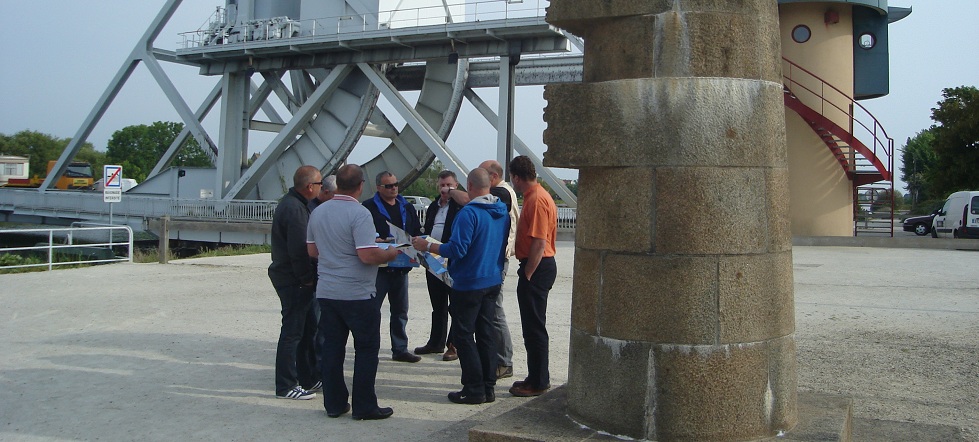
The Pegasus Bridge over the Caen Canal, between Caen and Ouistreham, saw one of the first actions of D-Day.
While 7th Battalion fought for possession of Benouville and Le Port, 12th and 13th Battalions supported by 4th Anti-Tank Battery faced more serious counter attacks from the south. Had 21st Pz Division, the closest armoured formation to the coast, been ordered to attack during the first hours of the invasion then they would have been able ‘to take advantage of the initial confusion amongst our opponents…We made a thorough calculation of our chances of pushing through to the coast ’ (Von Luck, 1989, 173) Significantly, the division had been unable to move until General Marcks, (whether authorized (sic) or not) ordered an attack to eliminate the airborne troops on the Orne at 0630hrs.
An attack by a whole Panzer Division with over 100 tanks would have been extremely difficult for 5th Parachute Brigade to resist, but at 1600hrs Marcks changed his orders and diverted the bulk of 21st Panzer against ‘Sword’ beach. Von Lucks 125th Pz Grenadier Regt reinforced by a reconnaissance battalion, an assault gun battalion and a platoon of Anti-Tank guns would still attack the airborne bridgehead. Von Luck’s attack was halted before Escoville where it ran into heavy bombardment from fighter-bombers and naval gun fire.
Marcks’ decision to detach Von Luck to deal with the airborne forces was much criticised by 21st Panzer’s Commanding Officer Edgar Feuchtinger ‘The absence of the Panzergrenadier regiment, one artillery battalion, the anti-tank battalion and the Army AAA battalion…and the combat tasks on both sides of the Orne, all had fateful consequences on the course of combat on 6t June 1944’ (Isby, 2004:222) Those elements of 21st Pz on the western bank of the Caen canal succeeded in reaching the coast at Lion sur Mer but were too weak to sustain their position. Certainly the threat of 6th Airborne Division on the eastern flank was significant in diverting troops away from the main thrust.
The Merville Battery presented a formidable obstacle protected by machine guns, mines, wire and ditches. General Gale realised it could only be effectively neutralised by an airborne assault prior to the landings. Bombing alone would not be sufficient. Only a direct hit by a heavy bomb would penetrate the 6’ thick concrete casemates and each gun would have to be hit in turn. One raid could never achieve this and furthermore, to protect the location of the invasion, many other similar coastal batteries would have to be bombed. ‘For these reasons a direct assault on the battery by airborne troops was necessary.’ (Barber, 2002:25) Colonel Otway commanding 9th Battalion decided on a complicated plan with paratroops attacking from the south whilst gliders carrying anti-tank guns and flame throwers landed within the compound.
9th Battalion’s drop was badly scattered, many of the men landed too far to the east to reach the Rendezvous Point in time, while others landed in the flooded areas and were drowned. Most of the equipment containers carrying mortars and machine guns were also lost. The assault gliders failed to find the battery and crashed well outside. That Colonel Otway and his men still pressed home their attack and furthermore succeeded is testament to the quality and calibre of the men and to their meticulous training. Brigadier Hill describes their achievement thus ‘The men of the 9th Battalion…were capable of breaking the sound barrier of normal human endurance and lived to fight on when there should have been nothing left’ (Barber,2002:9)
The significance of the capture of the Merville Battery has led to much debate, Hastings argues that ‘The costly battle to gain the Merville Battery was a fine feat of arms rendered anti-climactic by the discovery that the casemates mounted only 75mm guns with slight capacity to harass the beaches.’ (Hastings, 1984:88) However Hastings’ research has been shown to be inaccurate. The battery was not equipped with four75mm guns but larger Czech 100mm howitzers which, although smaller than the 150mm guns thought to be installed, would have caused significantly more damage to the troops landing on ‘Sword’ beach. (Fowler, 2003:99)
Thompson argues that the attack was a success. Not because it prevented the battery from firing on ‘Sword’ but because the batteries tasks included fire missions north of the Orne and Caen Canal Bridges, which Thompson describes as ‘far more threatening to the success of the D-day operations than firing on the beaches…9 Para neutralized (sic) the battery during the critical time that the other coup de main operation was in progress’ (Thompson, 1989:148)
6 June 1944. D-Day.
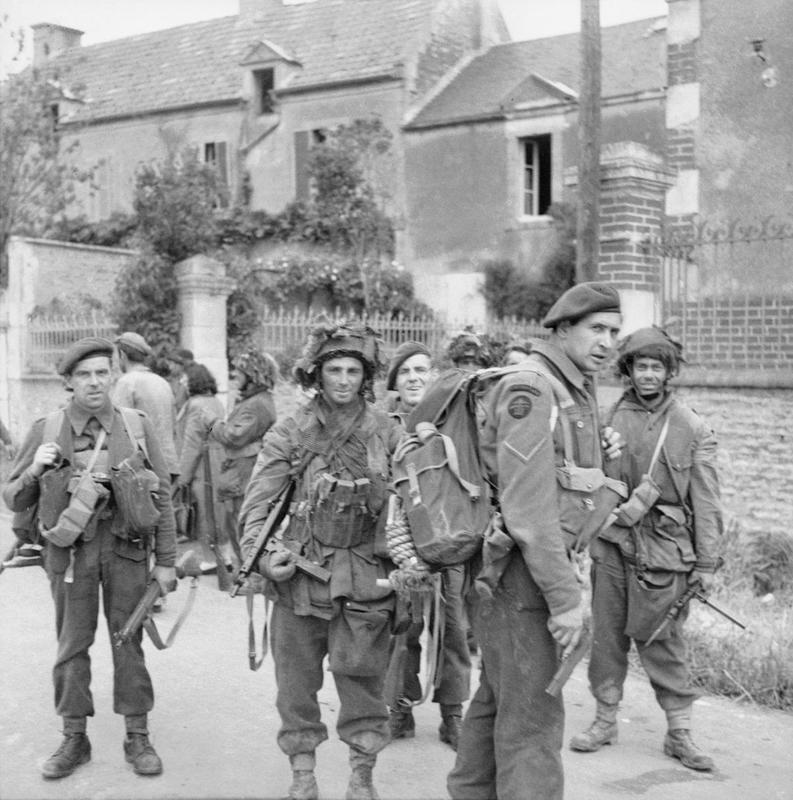
Commandos of No. 4 Commando, 1st Special Service Brigade, and troops of 6th Airborne Division in Bénouville after the link-up between the two forces, 6 June 1944.
According to Neil Barber, although the battery had not been built to directly threaten the beach it had the capability to do so, firing at a rate of six rounds per minute for all four guns. That it did not, was a direct result of the attack by 9th Battalion.
‘Sword beach was not molested by the Merville Battery on D-Day. It did not ‘wreak havoc’ and prevent the establishment of the beachhead’ (Barber, 2002:214).
The allied planners could not have foreseen the batteries true role in defending against an invasion but as Hastings explains- they could not ignore it. ‘The suppression of positions such as the Merville Battery was a vital piece of insurance.’ (Hastings, 1984:74)
The tasks of 8th Battalion together with the Canadians were to destroy the five bridges over the River Dives and having done so to consolidate on the Bois De Bavent ridge, thereby denying it to the enemy. Such a task was well suited to parachute forces they would be able to reach and blow up the bridges before local German forces had time to react. An assault force landing over the beaches from ‘Sword’ or further along the coast between Ouistreham and Cabourg would take far too long to reach the objective.
That 8th Battalion and the Canadians succeeded was a triumph of initiative and improvisation. The two battalions were badly scattered following their parachute drops, in particular 8th Battalion who had the worst drop of the whole division, being split between DZ’s K and N. At 0120hrs Alistair Pearson commanding 8th battalion found only 30 men had reached the Rendezvous Point. By 0400 this increased to ‘11 officers and 145 other ranks, including 6 sappers, and equipment which amounted to a light machine gun, two PIATs, two jeeps and four radios’ (Clarke, 2004:53)
The Chief Engineer assigned to 8th Battalion, Major Roseveare, had landed on DZ N. Realising this error and the need to move quickly, he decided not to make for the Rendezvous Point. He rounded up as many other sappers and explosives as he could find and set off on foot towards Troan and Bures. On reaching a crossroads 3 miles from Troan Bridge Roseveare adapted his plan and detached the majority of his party to deal with the road and rail bridges at Bures while he and a section dashed in a commandeered jeep for the bridge at Troan. After a hair-raising charge through the town, Roseveare succeeded in creating a 15’ breach in the bridge. Meanwhile the bridges at Bures were also destroyed.
Pearson however, was unaware of Roseveare’s success and during the day, once his battalion was strong enough, he sent a second party to destroy the bridge at Troan, which after another fire-fight succeeded in widening the breach to 70’ (Crookenden, 1976: 215) Once he was sure his objectives had been completed Pearson withdrew to the Bois de Bavent Ridge.
The Canadian Battalion landed on Drop Zone V and like 9th Battalion were badly scattered. Once again many men drowned in the flooded areas or were blown too far to the East. The Canadians however, regrouped and succeeded in their tasks of protecting 9th Battalion’s attack at Merville and destroying the bridges at Robehomme and Varaville. The Battalion then withdrew to occupy the crucial cross roads on the Bois de Bavent Ridge at Le Mesnil. The Canadians were joined by 8th and 9th Battalions and together they occupied the length of the Bois De Bavent Ridge to prevent German forces from observing the invasion beaches or from breaking through to the bridges at Benouville.
The destruction of the bridges over the River Dives was a success. By destroying them 12th SS Panzer were prevented from reaching the invasion beaches on D-day. Instead of joining with 21st Pz and attacking the invasion on the flank, the division spent the 6th June moving east towards Caen and the only available bridges across the River Orne and the Caen Canal open to the Germans. During the advance from Lisieux the division had been subjected to attacks from R.A.F. fighter bombers ‘The number of our vehicles knocked out by the enemy keeps growing…We are hunted relentlessly, but cannot afford to take cover…Tuesday 6th June, cost the 12th SS Pz eighty-three men…the division had yet to engage the enemy.’ (Hargreaves, 2006:56).
Having achieved all their D-Day objectives, the Parachute Brigades were reinforced during the evening by the welcome arrival of much of the remainder of the division. Two Battalions of the Air-Landing Brigade landed on the West side of the Caen Canal on Landing Zone ‘W.’ The 2nd Ox and Bucks and the 1st Royal Ulster Rifles together with the Divisional Armoured Reconnaissance Group, equipped with Tetrarch Light tanks moved south to reinforce the 12th and 13th Battalions to the South-West of Ranville and Le Bas De Ranville.
There were insufficient gliders and tugs to bring in the third Air-Landing Battalion the 12th Devons’ and the 3rd Anti-Tank Battery, who landed across ‘Sword’ on D+1. It had taken two lifts and 36 hours for the whole division to arrive in Normandy. The weaknesses in this slow build up were not exposed thanks to the weight of Naval and Royal Artillery fire-power together with the ground attack support from the Royal Air Force. Once again, during the battle for Arnhem in September 1944, 1st Airborne Division landed in two lifts, but without the support of the Artillery or Air Force the below strength airborne forces were overwhelmed. ‘It had taken the bitter disaster of Arnhem to drive home the point that airborne troops…must be taken in one lift’ (Thompson, 1989: 288)


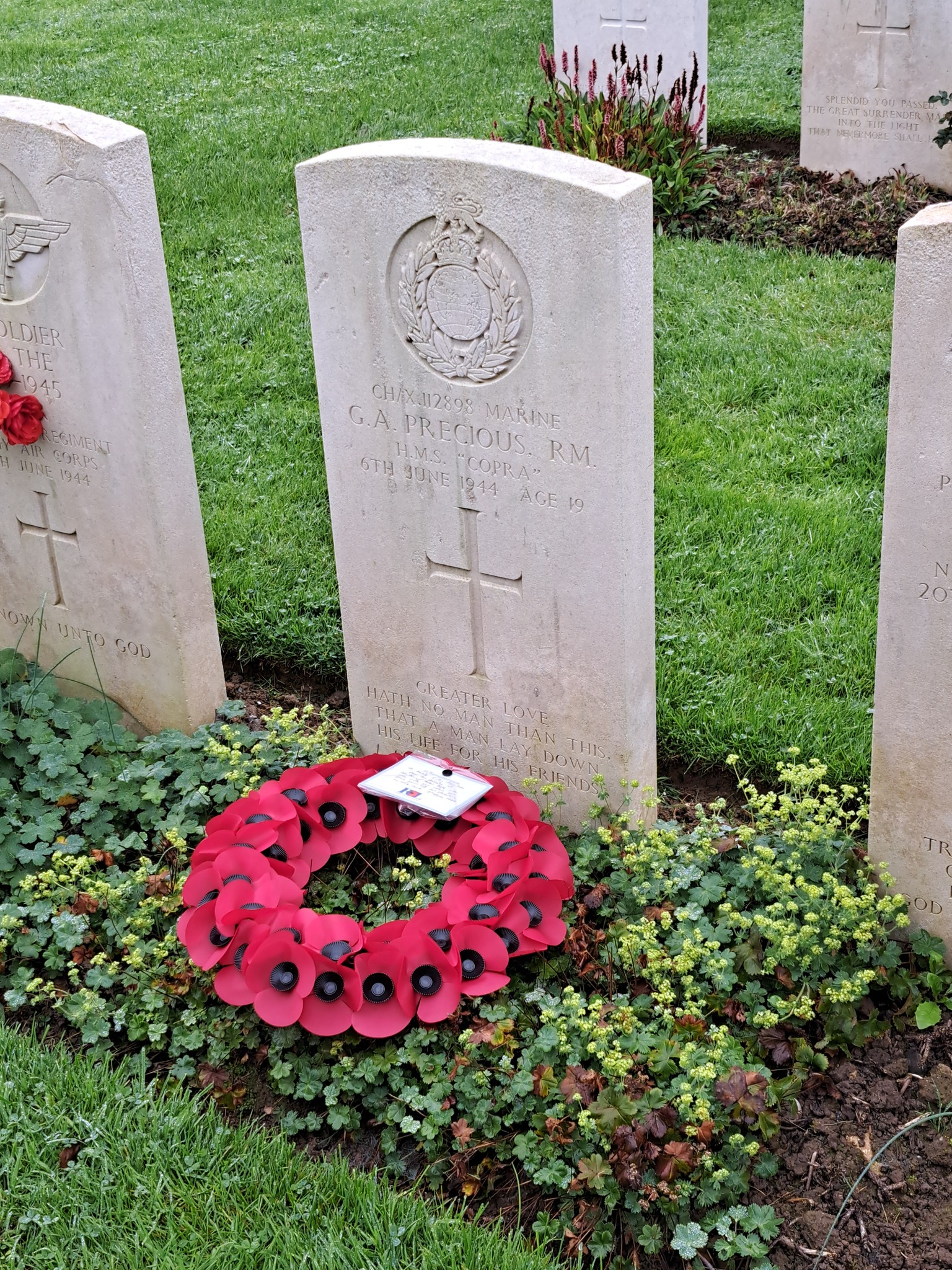
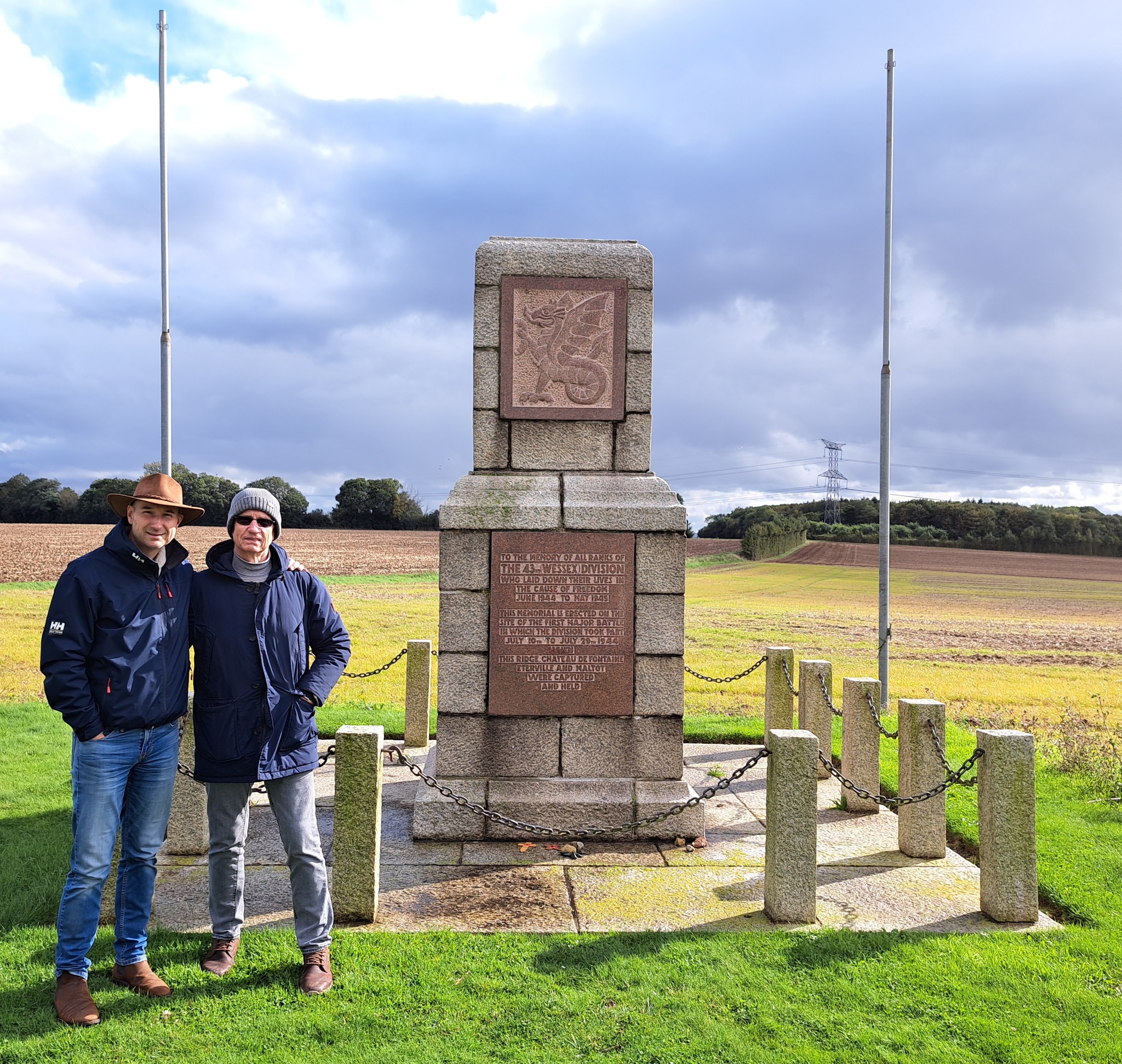
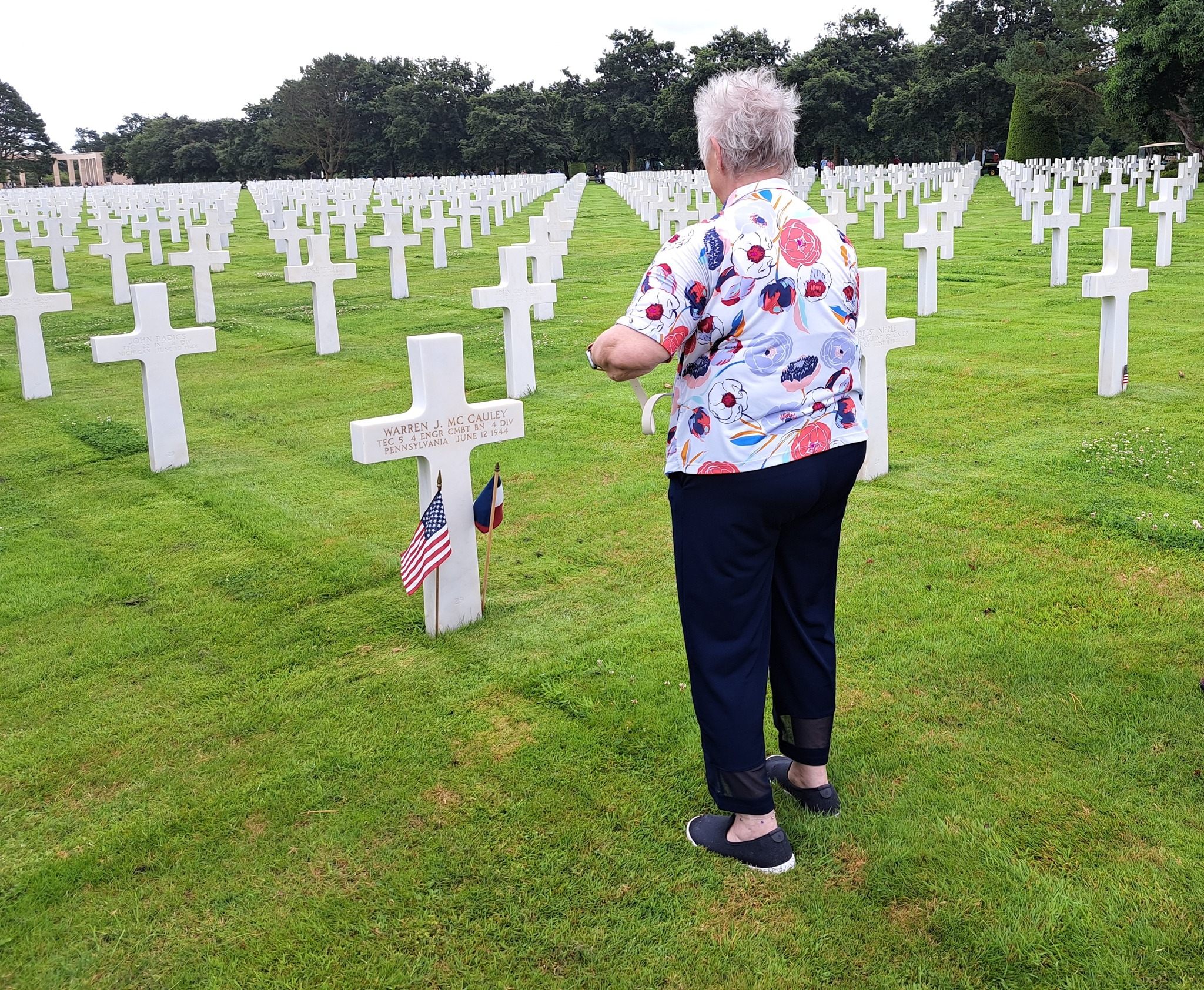
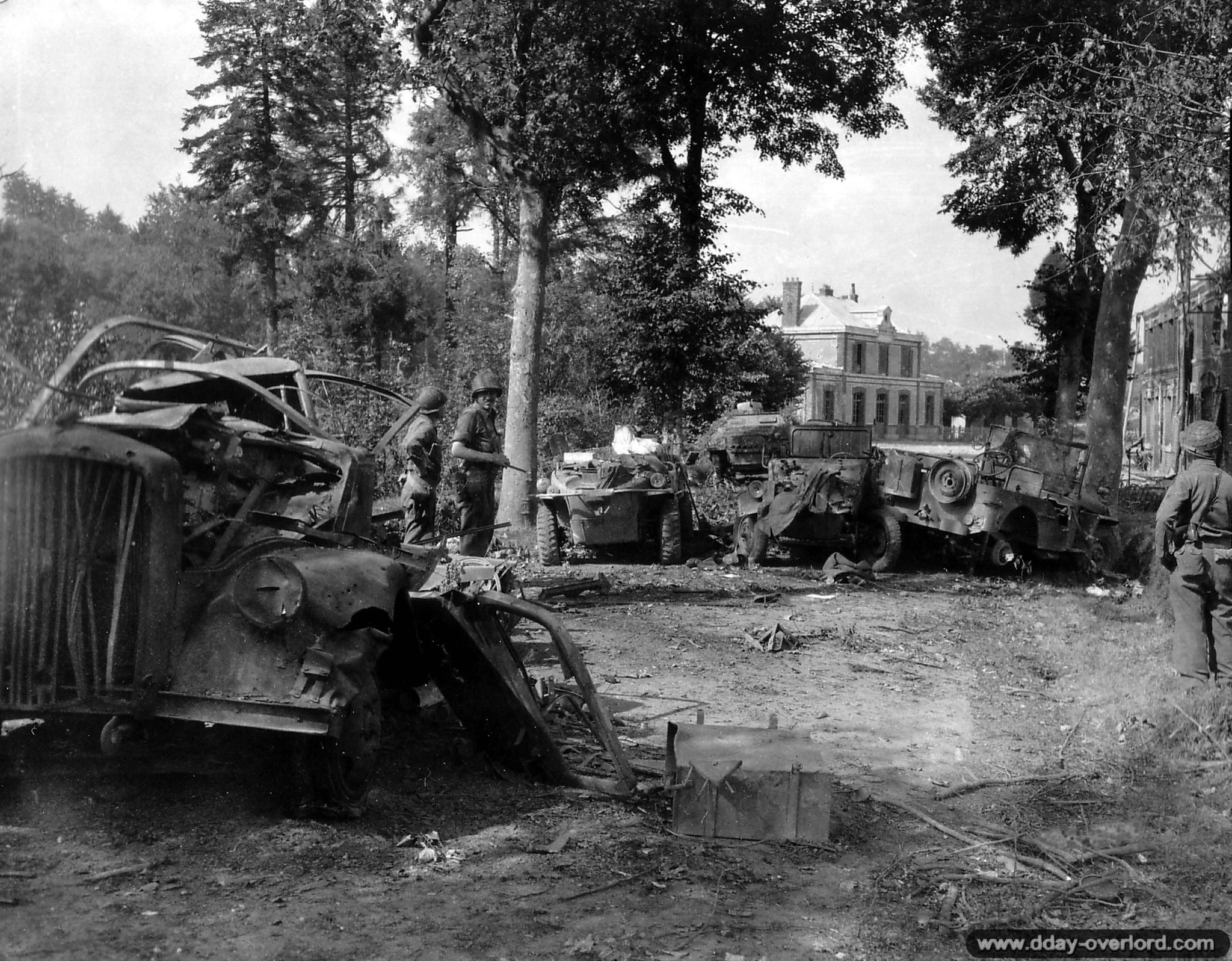

Leave A Comment